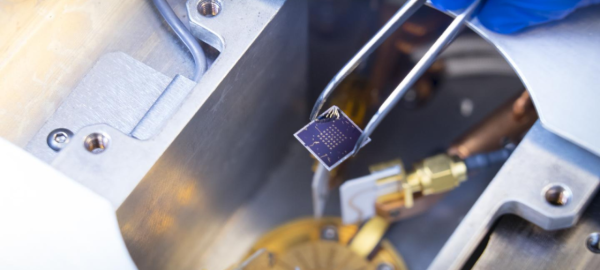Researchers Build Functional Transistor Integrated with Ferroelectric RAM
As our demand for computer chips grows, with some devices using 200 or more chips, the manufacturing conundrum is how to make them smaller and more powerful. Since a computer chip processes and stores information using two different devices, engineers know that combining these devices into one or putting them next to each other, would allow more space on a chip, making it faster and more powerful.
Recently, Purdue University engineers have developed a way that the millions of tiny switches used to process information—called transistors—could also store that information as one device.
The method accomplishes this by solving another problem: combining a transistor with higher-performing memory technology than is used in most computers, called ferroelectric RAM.
Researchers have been trying for decades to integrate the two, but issues happen at the interface between a ferroelectric material and silicon, the semiconductor material that makes up transistors. Instead, ferroelectric RAM operates as a separate unit on-chip, limiting its potential to make computing much more efficient.
A team led by Peide Ye, professor of Electrical and Computer Engineering at Purdue, discovered how to overcome the mortal enemy relationship between silicon and a ferroelectric material.
“We used a semiconductor that has ferroelectric properties. This way two materials become one material, and you don’t have to worry about the interface issues,” Ye said.
The result is a so-called ferroelectric semiconductor field-effect transistor, built in the same way as transistors currently used on computer chips.
The material, alpha indium selenide, not only has ferroelectric properties, but also addresses the issue of a conventional ferroelectric material usually acting as an insulator rather than a semiconductor due to a so-called wide “band gap,” which means that electricity cannot pass through and no computing happens.
Alpha indium selenide has a much smaller band gap, making it possible for the material to be a semiconductor without losing ferroelectric properties.
Mengwei Si, a Purdue postdoctoral researcher in electrical and computer engineering who built and tested the transistor, found its performance was comparable to existing ferroelectric field-effect transistors, and could exceed them with more optimization. Si and Ye’s team also worked with researchers at the Georgia Institute of Technology to build alpha indium selenide into a space on a chip, called a ferroelectric tunneling junction, which engineers could use to enhance a chip’s capabilities.
In the past, researchers hadn’t been able to build a high-performance ferroelectric tunneling junction because its wide band gap made the material too thick for electrical current to pass through. Since alpha indium selenide has a much smaller band gap, the material can be just 10 nanometers thick, allowing more current to flow through it.
More current allows a device area to scale down to several nanometers, making chips more dense and energy efficient, Ye said. A thinner material—even down to an atomic layer thick—also means that the electrodes on either side of a tunneling junction can be much smaller, which would be useful for building circuits that mimic networks in the human brain.
Source: Purdue University

